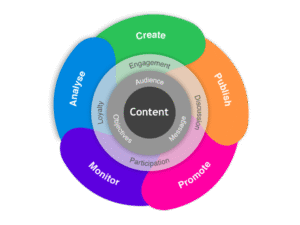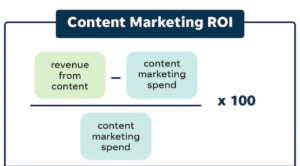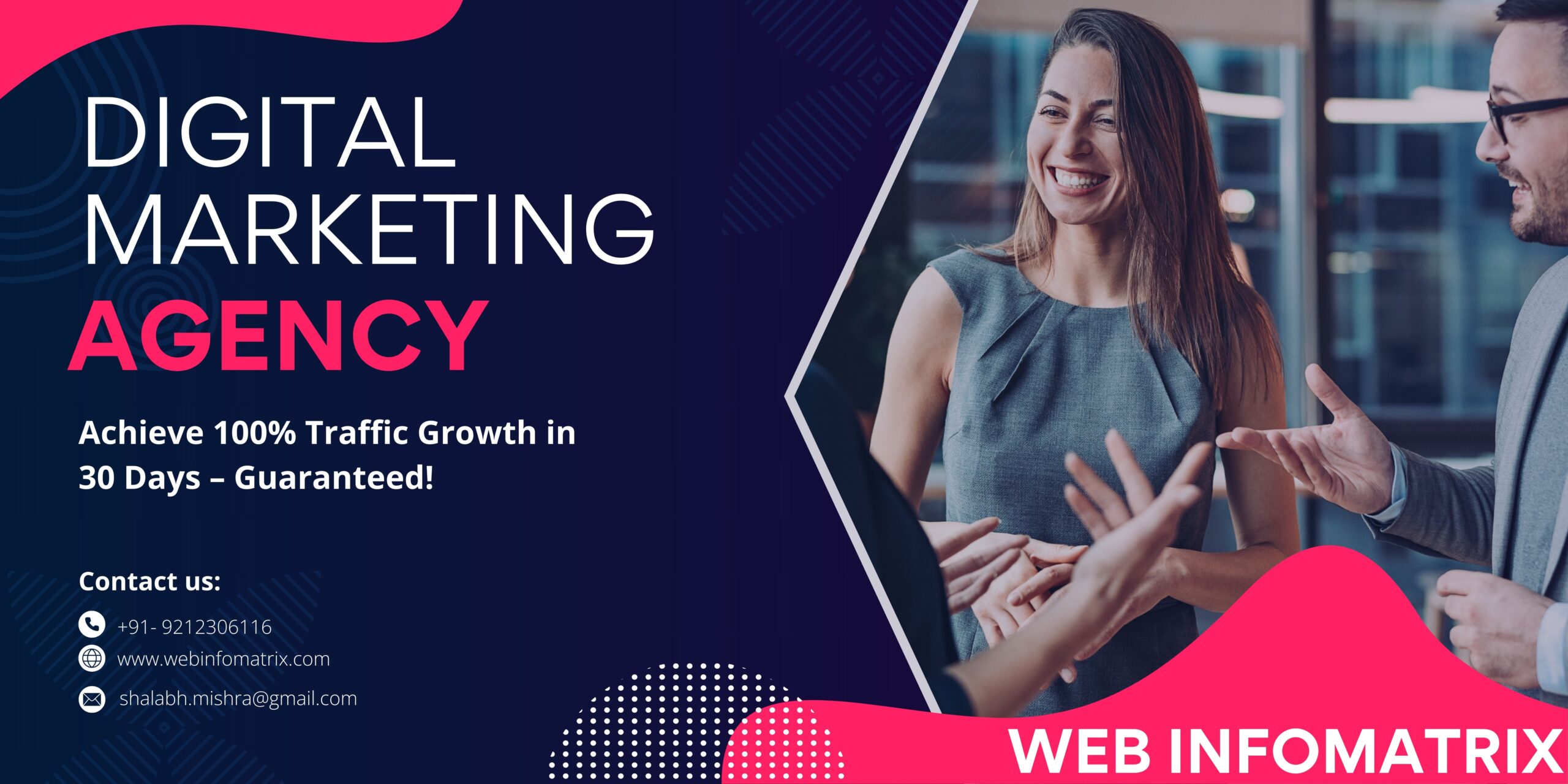What if your best-performing ad didn’t come from your media budget, but from your blog? Well, in 2025, the smart marketers know that high-quality content is more than a lead magnet.
Good quality content is an asset that builds trust, nurtures users, and converts buyers, long after it gets published. And, unlike ads, it continues to work. You will agree to the fact that ‘One well-crafted blog post or guide can outperform a $10K ad campaign in the long run.
It basically drives organic traffic, inspires social posts, fuels email campaigns, and ranks on Google for years. However, this approach only works if your content is of high quality, strategic, and measurable. Let’s understand why quality content is the best ad you’ll ever run, and how you can make it your brand’s biggest growth engine.
What is High-Quality Content in 2025?
High-quality content in 2025 is highly characterized by its depth, authenticity, and ability to engage users through a variety of formats, including visual and interactive elements.
It also prioritizes user experience, ethical storytelling, and technical SEO. Importantly, content needs to be trustworthy that reflects expertise and authoritativeness, while also being personalized and relatable to the target audience.
It’s Not Just Well-Written Anymore
High-quality content is way more than just well-written text. In 2025, content quality is not about writing style alone. It’s about strategic alignment with user intent, business goals, and search demand.
Good content today must:
- Satisfy search intent clearly and thoroughly.
- Be authentically useful, not fluff.
- Include original insights, data, or a unique POV.
- Utilize semantic SEO and naturally incorporate topic coverage.
- Reflect brand tone and voice consistently.
AI can help with scale. However, it can’t replace the human intuition behind what actually resonates with real audiences. Google’s Search Quality Evaluator Guidelines and Helpful Content updates now reward ‘experience-driven content’ that delivers real value, not keyword stuffing or copied content.
2025 Benchmarks of High-Quality Content That Wins
To make your content stand out in today’s timeline, you need to create original and unique content that resonates perfectly with your users. Here’s what quality content looks like today:
- Covers primary and related topics in-depth.
- Includes first-hand examples, frameworks, or stats.
- Optimized for engagement (headlines, visuals, and structure).
- Demonstrates E-E-A-T (Experience, Expertise, Authoritativeness, and Trust).
- Shows signs of real user interaction (comments, shares, and backlinks).
Google doesn’t rank content because it’s long. It ranks because it’s helpful and valuable for the users. Therefore, we can say that high-quality content in 2025 is experience-rich, goal-oriented, and algorithm-aware. It’s designed to win trust, not just traffic.
Why High-Quality Content Outperforms Paid Ads?
High-quality content typically outperforms paid ads in the long run due to its ability to build trust, foster customer relationships, and deliver cost-effective and sustainable results.
While paid ads provide instant visibility, content marketing focuses on creating value for the audience that leads to long-term engagement and brand loyalty.
It Works 24/7 Without a Budget
Paid ads might drive immediate results, but they come with an organic cost. Once your budget runs out, so do the results. On the other hand, high-quality content works around the clock. Unlike ads, great content doesn’t require constant investment to perform. Instead, it compounds over time, driving leads and traffic without additional costs.
However, you must consider this: ‘You publish a well-optimized blog post. Over time, it starts ranking on Google, gets shared on social media, and brings in organic traffic day after day. This means it’s working for you even while you are asleep.
Content offers compounding value, i.e., the more you publish, the more coverage you get across diverse stages of the buyer’s journey, and it doesn’t stop when your marketing budget runs out.
Trust Is Built, Not Bought
Consumers today are more ‘ad-averse’ than ever. As per a report published by HubSpot, “74% of consumers prefer to buy from brands that provide useful and informative content, rather than brands using aggressive ads.”
An excellently crafted content builds trust in ways paid ads can’t. Instead of pushing sales directly, your content nurtures your audience, which helps them make informed decisions.
Educational blog posts, tutorials, case studies, and customer stories can all guide potential customers through the sales funnel.
A Salesforce report found that 68% of B2B buyers prefer content that educates over content that directly promotes products.
Content That Converts Without Forcing It
High-quality content not only attracts visitors but also converts them. Through strategic content marketing, you can capture leads, build brand loyalty, and turn visitors into customers without the hard sell.
For example, content that addresses a user’s pain point or search query can naturally guide them down the funnel.
- TOFU (top-of-funnel) content, like blog posts or videos, raises awareness.
- MOFU (middle-of-funnel) content, such as eBooks or case studies, builds trust.
- BOFU (bottom-of-funnel) content, like product demos or consultations, closes the deal.
Content that converts doesn’t need to shout ‘BUY NOW.’ It should instead speak to the user’s needs and align with their decision-making process.
Real Data: How Content Delivers Compounding ROI?
Content marketing delivers compounding ROI by creating assets that continue to generate value over time, unlike traditional marketing, which usually requires consistent investment to maintain results.
This ‘compounding effect’ comes from content that attracts organic traffic via search engines, builds authority and trust, and generates leads and conversions, and can be repurposed and reused.
Evergreen Content Delivers Everlasting Results
One of the most advanced aspects of high-quality content is its evergreen nature. Unlike ads that stop the moment your budget runs out, evergreen content continues to deliver results year after year.
For example, a blog post you publish today. If it’s well-optimized and addresses an ongoing need or problem, it can rank on Google for months, even years, without any additional effort.
Over time, it builds authority, attracts backlinks, and continues to pull in organic traffic that makes it a highly cost-effective marketing asset.
Case Example
Suppose you publish a ‘How-to Guide’ or a ‘comprehensive industry report.’ Even a few months after it’s been published, it continues to generate traffic from long-tail keywords and consistently lands new leads.
Impact over time:
- First month: 100 visitors
- Six months later: 1,500 visitors
- One year later: 5,000 visitors
- Two years later: 10,000 visitors
This compounding effect means that you only invest in creating the content once, and it continues to work for you over the long term.
Content vs. Paid: Cost Per Lead Over Time
Let’s break it down with a cost-per-lead (CPL) comparison between paid ads and content marketing. Here’s a simplified example:
| Channel | CPL (Cost per Lead) | Ongoing Costs |
| Paid Ads (Google/Facebook) | $200 | Ongoing budget |
| High-Quality Content | $40 | One-time effort (SEO, creation) |
In this case, high-quality content delivers a substantial ROI over time as compared to paid ads, which require consistent budget allocation. As your content gets more backlinks and ranks for more search queries, the cost of acquisition for each lead drops dramatically.
Additionally, you must keep in mind that the more top-quality content you create, the more affordable each lead becomes. In short, content doesn’t save money. It just creates more value over time.
What is the Content Flywheel Effect?
The ‘Content Flywheel Effect’ is a marketing strategy in which each piece of content you create builds upon the success of the previous ones, which fuels momentum and growth.
Essentially, it is a cyclical process where content is reused, repurposed, and redistributed across various channels to maximize reach, engagement, and brand recognition, ultimately driving business growth.
Think of it like a mechanical flywheel. It takes initial effort to get it spinning, but once it is in motion, it gains momentum and requires less effort to maintain its speed and generate outstanding results.

Every Piece Feeds the Next
One of the most remarkable prospects of high-quality content is its ability to fuel the flywheel of your marketing efforts. Instead of being a standalone piece, each new piece of content compounds the impact of previous ones.
- For example, you begin with a cornerstone blog post that ranks well in search engines.
- As it drives traffic, it motivates readers to explore related content such as case studies, videos, and white papers, keeping them engaged.
- This engagement loop increases time on page, which signals to search engines that your content is valuable and relevant. This boosts your ranking.
- Then, you link to your cornerstone content in social media posts, email newsletters, or webinars to further expand its reach.
- This continuous cycle creates a self-sustaining content ecosystem that works harder with every additional piece you publish.
The More You Publish Strategically, The Cheaper Growth Gets
The beauty of content marketing is that it scales exponentially. The more strategic content you create, the more content equity you build. This, in turn, means that every additional post requires less effort to produce more leads and traffic.
- The first post takes time to gather traffic and rank.
- The fifth post builds on the first and drives more people to your site.
- The twentieth post strengthens your authority, attracts backlinks, and garners even more traffic.
By creating more content that’s strategically aligned with user needs, you improve the overall performance of your entire content ecosystem. Over time, the cost per lead (CPL) continues to decline, and the results enhance with less effort.
- With each new blog or resource, your content authority grows, and so does your overall site traffic. Therefore, this creates a powerful and self-amplifying cycle.
How to Measure Content ROI?
In order to calculate content marketing ROI, divide the net return from your content marketing efforts by the total cost of those efforts. Then, multiply by 100 to express it as a percentage.
However, the formula is (Net Return / Total Cost) * 100 = ROI%. This measures the profitability of your content marketing by comparing the revenue generated to the investment made.

The following pointers will help you understand the measurement of content ROI in a better way possible:
1. Set Goals by Funnel Stage
To prove the value of your content, you first need to set measurable goals at each stage of the buyer’s journey. High-quality content not only drives traffic but also nurtures leads and ultimately converts them into loyal customers or brand advocates.
A. Awareness Stage
- Metrics to track: Impressions, new users, time on page.
- Content examples: Blog posts, videos, social media content.
At this stage, you’re aiming to attract new visitors and introduce them to your brand.
B. Consideration Stage
- Metrics to track: Scroll depth, form submissions, and email sign-ups.
- Content examples: eBooks, webinars, case studies, and product comparisons.
This is where you engage users more deeply, positioning your brand as a trusted resource that helps solve their problems.
C. Conversion Stage
- Metrics to track: Lead generation, demo requests, and purchases.
- Content examples: Product landing pages, free trials, product demos, and testimonials.
Here, your content pushes the final decision and helps convert your engaged visitors into paying customers. Ensure your content supports all stages of the sales funnel. A great TOFU post won’t help if you don’t have BOFU content that converts.
2. Attribution Models That Matter
To measure the impact of your content, you need to understand multi-touch attribution. Unlike traditional last-click attribution, which only gives credit to the final touchpoint, multi-touch attribution considers the entire journey a user takes.
For example:
- The first touch might be a blog post that introduces the user to your brand.
- The second touch might be a product demo video they watched after clicking through an email you sent.
- The third touch might be the landing page they visited before making a purchase.
With multi-touch attribution, you can more accurately measure the full impact of your content across the entire buyer journey.
3. Tools to Use
In order to measure content ROI, you’ll need to leverage a few tools as given below:
- Google Analytics 4 (GA4): Track user interactions and measure engagement.
- HubSpot: Utilize it to track lead nurturing and the progression from content consumption to conversion.
- Semrush Content Audit: Analyze content performance and uncover opportunities to improve rankings.
- Google Search Console: Monitor how well your content is performing in organic search and identify keywords you may want to target.
If you’re using Google Analytics 4, take advantage of its event-based tracking to capture more granular content data.
Proving the Value to Skeptical Stakeholders
To demonstrate the value of high-quality content to skeptical stakeholders, focus on defining tangible results through data, aligning with their priorities, and building trust through transparent collaboration and communication.
Display how quality content drives business goals, provides a strong return on investment (ROI), and improves customer experience.
1. Show Real Examples, Not Just Metrics
When convincing stakeholders or decision-makers about the value of content, it’s important to go beyond raw data. Numbers are significant, but real-world examples are what make the case compelling.
2. Case Studies and Testimonials
Highlight specific pieces of content that generated significant results:
- Case Study 1: A blog post that generated 2,000 new visitors in a month and resulted in 50 new leads.
- Case Study 2: A video tutorial that attracted backlinks from authoritative sites, boosting the website’s domain authority and improving rankings for several target keywords.
3. Qualitative Impact
Sometimes, the impact of content isn’t immediately quantifiable. You must share customer testimonials, feedback, and engagement metrics that demonstrate how your content directly influenced purchasing decisions.
Real examples can be more persuasive than statistics. Share the story behind a piece of content and how it played a role in closing deals or gaining brand trust.
4. Create a ‘Content ROI Deck’
A content ROI deck is a powerful tool for showing the ongoing value of your content marketing efforts. It helps break down performance data into easily digestible insights.
Your deck should include:
- Top-performing content: Highlight pieces that have driven the most traffic and conversions.
- Lead conversion data: Show how much traffic your content is converting into leads and sales.
- Comparison with paid channels: Compare the ROI of content against the costs of paid ads.
- Growth over time: Showcase the compounding effects of evergreen content and demonstrate its ongoing impact.
5. Metrics to Include
You must include the following metrics to prove the value of your high-quality content to your skeptical stakeholders:
- Traffic Growth: Organic visits to blog posts, landing pages, etc.
- Lead Generation: Email sign-ups, form submissions, demo requests.
- Conversions: Number of sales or deals directly tied to content.
A well-structured and high-quality content ROI deck will convince stakeholders of the long-term value that content brings, especially when compared to short-term paid advertising campaigns.
Final Talk
High-quality content is not just a marketing asset, but a long-term business driver. While ads may give you a short-term boost, high-quality content works consistently to build trust, attract leads, and convert customers. It’s the best ad you’ll ever run because it’s self-sustaining, compounding, and scalable.
When done right, content can generate organic traffic without continuous budget input, build brand trust over time that nurtures relationships with your audience, and convert visitors into customers through strategic content aligned with user intent.


